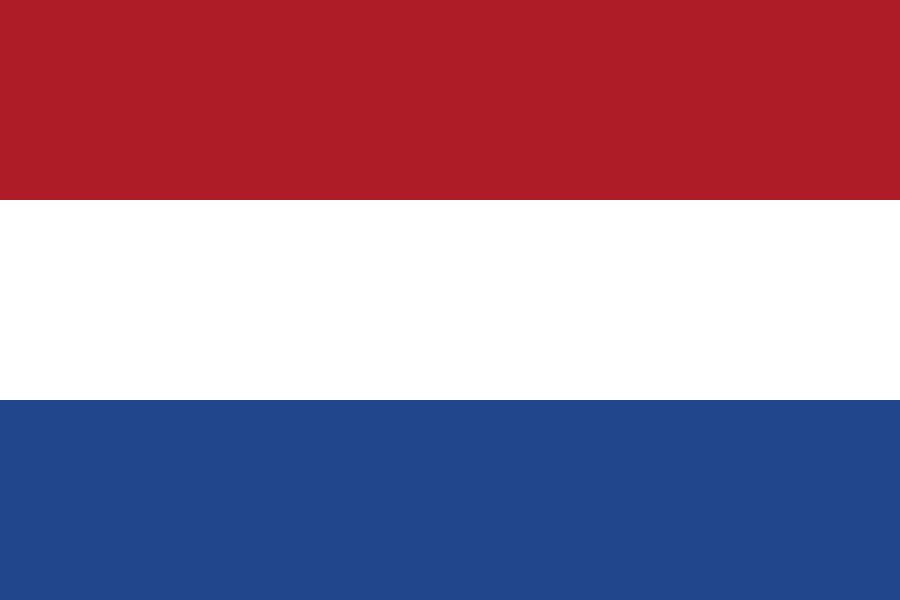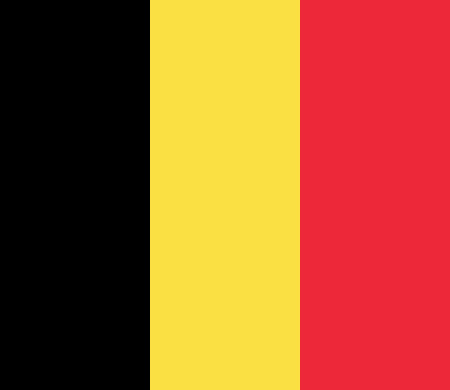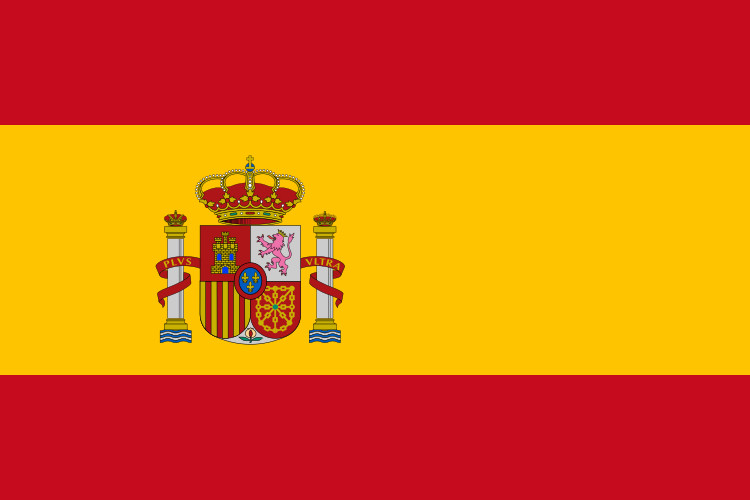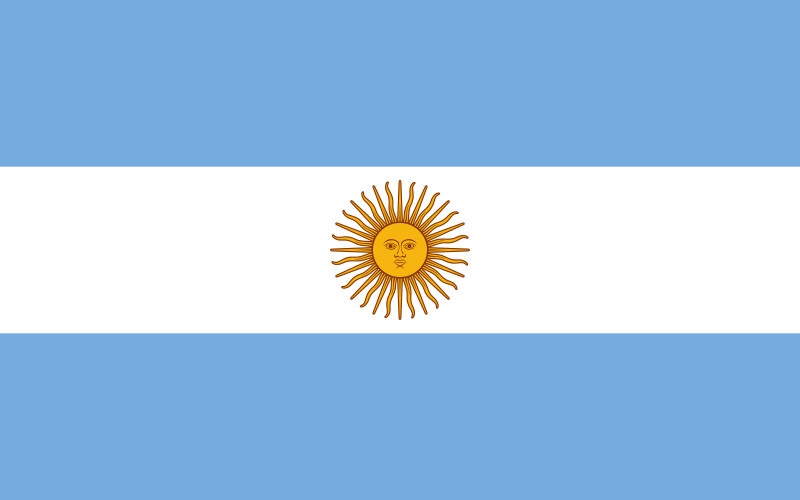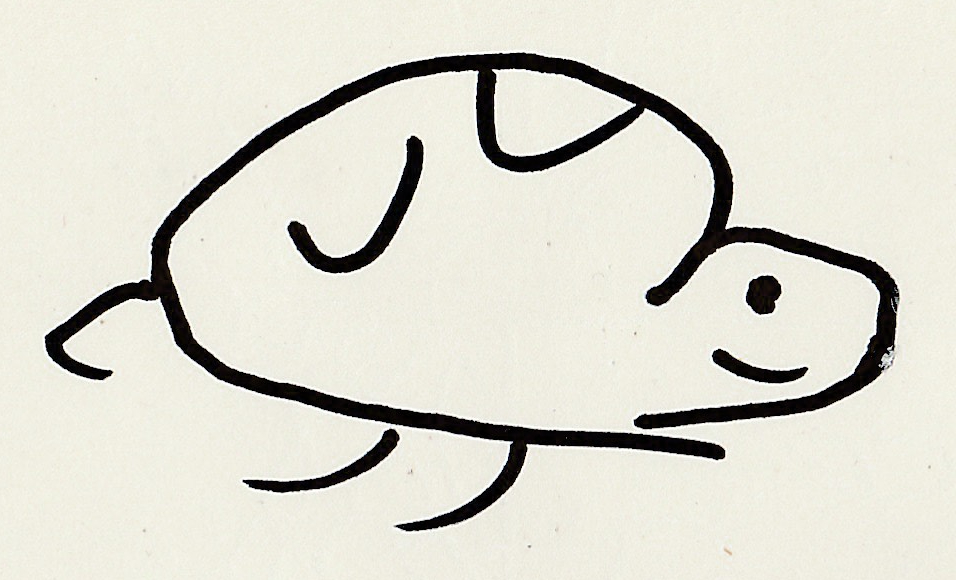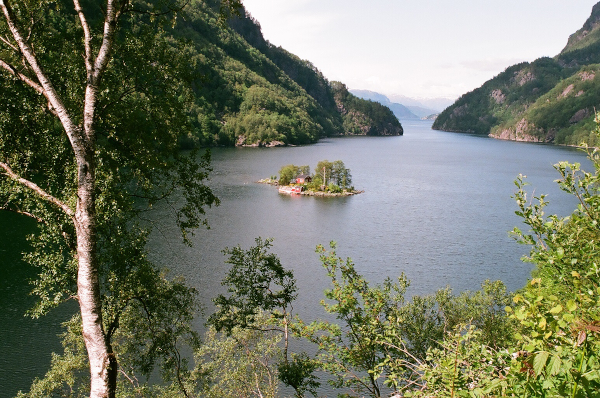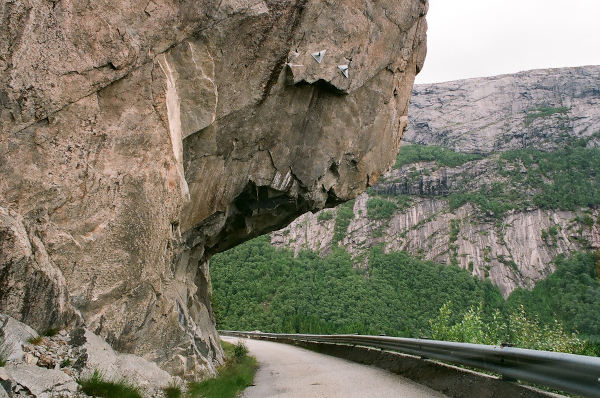Blog
As may be expected of a blog, it is an ongoing affair. For the moment, we publish here three types of texts that suit the definition of a blog.
- in English: texts that Touché and Guy post with a certain regularity at LinkedIn.
- in Portuguese: contributions of Touché to our company website on LinkedIn, and some of her older posts on Brasil com Z, a blog by expat Brazilians about the countries they emigrated to. The cooperation stopped some time ago, but Touché's texts are still interesting.
- in Portuguese, Dutch, English and even French: whenever we travel, we send newsletters to friends in several countries. At first, these messages appeared only in Portuguese, later a Dutch version was added, and in 2016 we were crazy enough to add a French and an English newsletter during our stays in New Zealand/Australia and Costa Rica. We will progressively post some of these travelogues, going back in time.
Note: the latest post is at the top. Use the menu at left or scroll down for older messages.
Touché at LinkedIn in 2020-1
Memories in times of pandemic
Wikipedia defines ‘déjà vu’ as ‘the feeling that one has lived through the present situation before’. It is a ‘feeling’ not a ‘memory’. Consider the former as linked to an emotion while the latter relates to something concrete. Isn’t an emotion something ‘concrete’? Yes, sure, but in a metaphorical way. Let’s say a feeling is a concrete emotion but emotions are not basically definable as something ‘concrete’… whereas memory refers to (concrete!) facts from the past which, of course, can cause an emotion when remembered.
Our present conditions to provide information led to the worldwide knowledge about covid-19 in a speed high enough to allow governments of all countries to take the necessary measures to minimize the tragedy to the lowest possible number of victims – as probably there has never been a chance to avoid the virus to get spread at all. Lockdown was the first action required and it demonstrated the effectiveness of this decision to protect people from contamination and death.
For political leaders who care for the well-being of their people it was a matter of declaring it urgently. No time for bla-blas, the evidence was provided by facts and the analysis made by scientists. Fortunately in some counties the lockdown was declared at the early stage of the pandemic. Citizens of nations governed by those who think of themselves as ‘I know better’ are suffering the cruel consequences of the arrogance of these so-called leaders.
Thus, when we got home from our normal activities the day before the lockdown was declared where we live we had no idea about what waited for us the next morning. Caught by surprise there was no alternative: lockdown means locked in. No time for preparation, no planning, no agreements on how to divide spaces and activities, all will be done from home except some very few escapes to get food or medications.
However there is a positive side in all that happens. Even if staying home compulsory offered the opportunity to search new solutions, to create new parameters, to develop new talents and skills and work methods. Studying online became a usual practice and many meetings and encounters by internet proved the effectiveness of programs made with this purpose. Less traffic, no need to commute in many cases. Pollution levels reduced and cities became more livable. A great opportunity to pick up with old acquaintances and have more contact with people you like.
For those who live with other people, spending more time together means getting to know each other better, communicating and sharing without the stress created by the constant rush rush. Caring and being with the ones we love. Exercising tolerance and patience that lead to wisdom.
For those who live by themselves, the lockdown offers excellent conditions to dedicate time to activities we ‘never had time’ to do. Hidden talents may show up and bring the satisfaction found when we discover what we can create. Use more time to enjoy being with ourselves, to get to know ourselves. A time for new discoveries.
Among the so many changes forced by this situation memories became more than ever important to keep our emotions healthy. The Present being a hard reality pointing to a very uncertain Future, the Past may be a cozy shelter where we can find some treasures, be it people, places, activities… as well as the school to learn from old experiences. It is always wise to learn from History. This is our challenge now.
This is no ‘déjà vu’. It can be a ‘déjà experienced’.
We should learn from our memories. Before it is too late and there will be nothing more to be remembered...
Social Isolation
This is not about social distancing. Specially because distance is something usually attributed to a geographical concept meaning that it can be measured using mathematical parameters. And even if it sounds a bit weird to refer to social distancing we can still establish this is a measurable distance if we think ‘social’ as a ‘place’ that can also be a person or group of people. This expression became popular after the pandemic caused by covid-19 required social distancing specifies how many centimeters people must (or should…) be physically away from each other as a way to avoid contamination.
Let us then focus on social isolation, which is a much more complex subject because it deals not only with geographical distance but with the emotions deriving thereof which are not necessarily caused by the existence or absence of meters or inches between people.
It is interesting to note that the expression 'social isolation' is not to be found in the Merriam-Webster dictionary. However probably most people will have no difficulty to understand it. Well that seems to be a contradiction! Yes. To speak about social isolation can lead to an incredible unclear linguistic mix in our western culture.
Starting with the definition of ‘social’(*), the experts describe it as:
: marked by or passed in pleasant companionship with friends or associates
: tending to form cooperative and interdependent relationships with others
Some synonyms for social: convivial, sociable, gregarious. These terms have very positive connotations.
Whereas ‘isolation’(**), is defined as:
: the state of being in a place or situation that is separate from others: the condition of being isolated
: the act of separating something from other things: the act of isolating something Isolation stresses detachment from others often involuntarily
Some synonyms for isolation: privacy, separateness, solitude. These refer to situations which are not ideal for most people.
Here the question: how can an activity described as ‘pleasant companionship with friends or associates’...’tending to form cooperative and interdependent relationship with others’ match ‘the condition of being isolated’, or being in a situation that ‘stresses detachment from others often involuntarily’?
Not much logical thinking is needed to conclude that social isolation is not exactly a clear definition. However it is a clear definition.
Maybe because being in social isolation permits us to be social and in isolation at the same time.
Maybe because when we are experiencing social isolation all we need is a way to stop being socially isolated.
Or maybe because when we are in social isolation we can not care less about the linguistic exactitude of this expression?
For any possible reasons at times of a pandemic this type of analysis is not so important. Fundamental is to realize that many people are suffering because they are in social isolation. And do our best to extend our kindness and support to them.
And in case someone is curious enough to ask what social isolation means, let’s take our time and patience to try and explain, giving people the opportunity not to be in isolation but to feel social and in pleasant companionship.
(*) https://www.merriam-webster.com/dictionary/social
(**) https://www.merriam-webster.com/dictionary/isolation
Pick Your Favorite
Think of History as constant unpredictable dynamics. Or as a road to unexpected destinations. Or dialogues interrupted. There are incredible possibilities to try and find an explanation for facts that appear to come out of nothing but in reality were already happening but not clearly perceived.
Day to day events do not seem to be of historical value however all that happens impacts on all that will happen next.
Think of people who were at locations where incredible events occurred at that very moment when those surrealistic, surprising, astonishing, impossible, etc. facts took place. Many times the unexpected just imposes itself bringing as consequence that the world will never be the same again after it happened. Not necessarily because History is dynamics but because the essence of the changes originated then contains dramatic elements which not only shake reality but shape new forms of living. Sometimes the History-road reaches a turning point which is a point of no return.
Think of the world population in April 2020. Most of us are born after World War II, meaning that most of us have been under social pressure to re-build lives and models for development for many years now. After a war no-one can see the world the same old way… simply because the world is changed and that ‘same old way’ is over. And we all became witnesses of History. Almost living pieces of a museum!
Here a list of some of the remarkable facts and inventions which determined crucial changes after 1945 and made it impossible to return to the ‘good old days’ now. Were those old days that good?
- Vaccines > first vaccine was created by Edward Jenner, in 1796, agains smallpox. From 1945 on: influenza (1945)// polio (1952)== Sabin (1962)// Japanese encephalitis + anthrax (1954)// adenovirus 4 and 7 (1957)// ebola (2019). In 1980 smallpox was declared eradicated worldwide.
- Bikini > tradition of Rio Carnival started in 1950. Various models took over in different countries from 1960 on.
- Contact lens (gel and soft types) > invented by the chemists Otto Wichterle and Drahoslav Limin the Czech Republic in 1959. Silicone hydrogel contact lenses were launched in Mexico, in 1998.
- Contraceptive pill > invented in 1960, in the USA.
- Hearing aids > started in 1960. Full digital wearable hearing aid was invented by Engebretson, Morley and Popelka, researchers at the Central Institute for the Deaf at the Washington University in St. Louis MO, USA, in 1980.
- Colour TV > Walt Disney’s Wonderful World of Color, USA, Sept 1961.
- Mini skirt > created by Mary Quant – beginning of the 60s on, London, UK.
- Pantyliner/disposal menstrual pads > Johnson & Johnson made ‘Carefree’ very popular from the 60s on. Disposable menstrual pads were first manufactured by Kotex, in Jan. 1921, in USA.
- The Beatles > started their musical career in Liverpool, UK, in the beginning of the 60s.
- Ashram > the 60s-70s marked a movement towards these places, located in natural surroundings (many in India) where people regularly performed spiritual and physical exercises.
- Heart transplant > first human-to-human heart transplant was performed by Dr, Christiaan Barnard, in South Africa, 1967.
- Woodstock > mega festival attended by 400.000 people, in Max Yasgur’s dairy farm in Bethel, NY, USA – August 15-18th, 1969.
- Gay Power > started in 1969, gaining progressive force around 1980, in different countries. The first same-sex marriage happened in The Netherlands, in 2001.
- Cell phone > first handheld model was demonstrated by Martin Cooper, from Motorola, on April 3rd, 1973.
- In vitro fertilisation > first birth in 1978, in Royton, Oldham, UK – Dr. Robert G. Edwards (Nobel Prize in Physiology or Medicine in 2010).
- Computer > the first personal computer was launched by IBM, based on Intel’s 8088 CPU – on Aug. 12th, 1981, Armonk, NY, USA.
- Digital cameras > first model was ‘Mavica’, launched by Sony, Minato, Tokyo, Japan, on Aug 25th, 1981.
- Chernobyl > accident at nuclear power plant in Pripyat, Ukrainian Soviet Republic, April 24th, 1986,
- Smartphone > invented in the 1980s and commercialized in 1991 – Nokia, in Japan, BlackBerry, in Canada.
- Internet > created by the English engineer and computer scientist Sir Timothy John Berners-Lee. On Aug 6th 1991 he launched the first website: http://info.cern.ch/hypertext/WWW/TheProject.html.
- Apartheid > racist discriminatory system, in South Africa, between 1948-1994. On April 10th 1994 Nelson Mandela, leader of the movement against apartheid, was sworn in as President, after 18 years in jail as political prisoner.
- Social media > first was ‘Six Degrees’, 1997.
- Berlin Wall > built in 1961, it cut off West Berlin from East Germany, including East Berlin, until November 9, 1989.
- Wikipedia > free online encyclopedia, launched by Jimmy Wales and Larry Sanger, on Jan. 15, 2001. Available in 285 languages.
- Twin Towers > terrorist attack on the World Trade Center, New York, USA, on September, 11th, 2001.
- Linkedin > founded in Mountain View, California, on Dec. 28, 2002 and launched on May 5, 2003. Currently headquartered in San Francisco, California, USA.
- Tsunami > a series of giant waves caused by an earthquake that caused the death of more than 184.000 people in Indonesia, Sri Lanka, India, Thailand, on Dec. 26th, 2004.
- Fukushima Dai-ichi > accident at nuclear power plant in Okuma, Fukushima, Japan, March 3rd, 2011.
- Climate activism > the 'school strike for the climate' started by Greta Thumberg in Stockholm, Sweden, in August 2018
- Medical devices > pacemakers, infusion pumps, heart-lung machine, dialysis machine, air ventilators, artificial organs, implants and many different equipments based on imaging technologies, invented in different dates after the 2nd World War.
Obviously this list does not include all facts and/or inventions that have deeply impacted our societies in modern time. Whether you like it or not, your life has been influenced and changed by those facts. Otherwise you would not be reading this text online… probably while taking a break during your home office working hours?
At present we live under the laws determined by the pandemic of coronavirus. Probably the creation of a vaccine against this virus will be the next cornerstone of our civilization. And again whether you like it or not, your life will change after we refer to the moment we live as the ‘good old days’...
Maybe you find it challenging to make your own list? It can be a way to learn very interesting things!
Coronoia
When did it all begin? Maybe there is nobody who can determine the precise moment when the now internationally famous virus made a big jump and decided to take revenge against the human race for all destruction caused to our planet.
Despite centuries of lessons from History, we never stopped being arrogant about our supremacy over other forms of life. Animals? Good for gastronomy and voyeurism in zoos, not to mention the pleasure and excellency of some masters in the art and sport of killing them. Trees? Elementary, my dear Watson, everyone knows houses and many objects can be built with wood. Plants? Good complement for dishes of other sorts, basic for vegetarians, crucial for vegans. Not to forget their use for clothes and interesting details of decoration, or other woven pieces like rugs, curtains… fibers are plants, or not? Etc etc etc, this list is open to anyone who feels like adding more items.
However, how could we ever think of medications without plants to supply the raw material and animals to have them tested on? How would any research in Botanics, Biology, Chemistry, or any other subject linked to saving lives be possible without killing animals and plants? If they are also living beings this is not to be taken into account in this case, being this question part of another field of study that is Philosophy or something of the sort. Here we are dealing with saving lives and reality comes first. If we mean to stay alive we have to study and learn about the different possibilities to do so.
Of course, this also means the increasing need for professionals in these fields, and it seems that in many countries the percentage of medical doctors and specialists does not follow the progressive augmentation of demography as well as the various diseases appearing as time passes.
Where do viruses come in this non-scientific (at all) analysis? Not so elementary as Sherlock Holmes would say to my dear Watson, they are part of the world of living things, meaning that they are in constant change. And even if some can wonder why should we spend time discussing viruses outside the scientific milieu where just a group of highly educated people go around in a familiar way, it might be of importance to go out of the ‘let experts care about those things’. They do not just exist to complicate men’s life and provide for some industries to make (lots of) money. We, ordinary people should also take our part to support them to do their work, because without health professionals we can’t move on to good health services.
Dealing with living beings can not be simplified to a division of tasks, types and levels of education. It can also be that there was a moment when the viruses decided to rebel against being underestimated in a broad sense. Or not? Maybe they got tired of being treated as just viruses. Who said viruses are not provided with some type of vanity, as we define it, probably did not know much about vanity and how it contaminates viruses, particularly those of the royal type, the ones who enjoy nobility and crowns. Because, for those who have not yet considered it, ‘corona’ means ‘crown’ in Spanish. It does not require deep linguistic knowledge to make a link about this special family of viruses and their importance.
So, this is the story. Not talking about History yet but yes, the Corona Virus has become famous worldwide and invades just any place they please. No ‘may I come in?’, no. They just took possession of what they never had: fame and glory. In short time, they became headlights in news, mandatory subject in groups, dictators of fashion, deciders of actions, causes of endless discussions, meetings and new laws, not to mention financial losses to many. Yet, not satisfied with so much power, they also demand their rights regarding the emotional contacts between us – arrogant humans who have been treating them as minor beings.
And that is how, for their pride and satisfaction, people who love to be lovely, who care for kissing and hugging, or even for less obvious ways to demonstrate affection and recognition, like to shake hands, became worried and untouchable.
Yes, I still love you. But please… stay away and above all, don’t touch me.
And yes, this disease has a name: coronoia.
From shamans to specialists... and back
Long ago, that is, very long ago, when mankind lived in tribes, social welfare was not ruled according to a variety of bureaucratic systems, but by clear standards for the most based on age and knowledge. So, while mothers cared for the children and keeping the household in order, fathers went chasing to bring food in (or maybe was it also a sport?), and the oldest members of the community acted as leaders, counselors and… doctors.
Without any formal education as we know it, these people accumulated information and secrets that gave them the recognition of the tribe as their natural leaders, and whenever a touchy matter needed to be discussed and solved, the authority of these old members of the clan was taken for granted, and the words they spoke were not put into doubt: they knew their chiefs were there for them.
In the particular field of healing methods, the practice of shamanism was widely used in many indigenous and tribal societies around the world. It centered on the belief in supernatural phenomena, where the shaman is as mediator between the tribe and the spiritual world, acting on behalf of the community to communicate with ancestral spirits, demons and gods who give him/her the power to heal. shamans claim to have acquired spirit guides who direct them in their travels in the spirit world, enabling them to enter the spiritual dimension.
The medications were product of natural flora mixed in specific ways that just the shaman knew. It was already the tradition that curing the body was entangled with the notion of curing the sores of the soul, then the shaman was also the one who gave spiritual guidance to the tribe. He/she knew each and every member of the tribe and acted as a caring father/mother for all. There was trust and everybody was happy... medically speaking.
So, even though shamanism is far from ‘modern’ as medicine is concerned, its principles have been studied by famous anthropologists and considered of key importance in the analysis of medical procedures, basically because the techniques used by the shamans exploit our intuition and other forms of perception which are not ‘precise’.
As time passed, societies became more and more complex and diverse. Demography played a serious role in the change of social behavior and obviously medicine and general welfare passed through crucial modifications. To make it simple, from a father/mother-type of relationship to a high-technified way of dealing with people. Strange as it may seem, the more it became possible for those who care for health to gather information about diseases and what is going wrong in our body, the less we can feel our medical system as a way to get to know about ourselves. Whereas in the old times our body malfunctions were analyzed and perceived as a ‘miscommunication’ between the totality composed by outside and our inner worlds, the new equipments permit a deep view on a specific part of our body, and most of the time on that part only. The medical activity moved dramatically towards an analytical approach which tends to eliminate the holistic view that allows curing people by treating them as whole entities.
Undoubtedly the introduction of high-tech in clinics and hospitals has made possible to assure diagnosis and treatments, and that can be only positive. But there are some aspects of this ‘departmentalized’ system that require attention. Even when a treatment starts with a consultation with the ‘home doctor’ (general practitioner), the voyage around the world of specialists and their sophisticated equipments can be very… painful. Not only because all these fancy instruments focus on ‘that’ part of us which is not working as it should, but – and mainly – because many times the doctor consulting us also treats us as dysfunctional machines. And that hurts.
How can we escape this labyrinth and find our way back to medical doctors who listen and share, who sincerely worry and help us find health solutions where our emotions are taken into consideration? Doctors who offer not only great qualifications and competence but empathy? Who really care for our welfare? We must understand that the daily pressure on those working in the medicine field is very strong and causes a lot of stress to them. Too many patients, lack of professionals and jobs, full agendas. However, it is when we are sick that we feel most vulnerable. Maybe we can try and compromise? A good treatment always brings more effective results when there is a human eye looking at someone in need of medical assistance.
The idea here is not to pledge a historical return to shamans. But we can always learn from the past. Definitely, doctors who see their patients are the best. Smiles are even better! We all need some tenderness after all...
A project of happiness
New Year’s Eve passed, great resolutions duly made – and who knows, already on the way to be unfollowed… - time is come for something more appealing than mere resolutions, which are either too stressful or too vague, and we can move towards the excitement of building up some projects.
Where a resolution depends much on intellectual reasoning, will, self-criticism and other concepts of the sort, a project has as starting point the use of imagination, creativity, dreams… and it is just after letting the mind fly free around our inner and outer worlds that we are demanded to take action. Of course, attitudes based on motivation and deep belief that no matter the obstacles it is worth to pursue the insight which sparkled in us and has much more possibilities to generate positive results. Why is it so? Because dreams are powerful. Only real dreams can build remarkable projects.
If we agree on that – hopefully we do – we also agree that happiness is a guiding light for most of us. Notwithstanding that there are people who cherish their problems and cultivate their sufferings (yes… this is a fact), the human race is constantly searching ways to live better and better, and the state of well-being can be the main door for the definition of happiness.
However, no matter what philosophers or scientists establish as such, happiness is a personal, private and unique state, meaning that there are probably as many happinesses as there are people looking for it.
But this is not a problem. Nobody can impose happiness on someone else. The real point is, whether you want to be happy or not. And if you do, how can you achieve it.
Here’s the idea: make your project for happiness. Look at yourself in the mirror and ask what are the people, situations, jobs, places, that bring you tranquility and a sense of fulfillment. What are your priorities and how to focus on them.
Not easy? Probably not. Because talking to ourselves is never ‘easy’. But after you do it, it is like a bird learning to fly. You dare open your wings. Now… fly!

